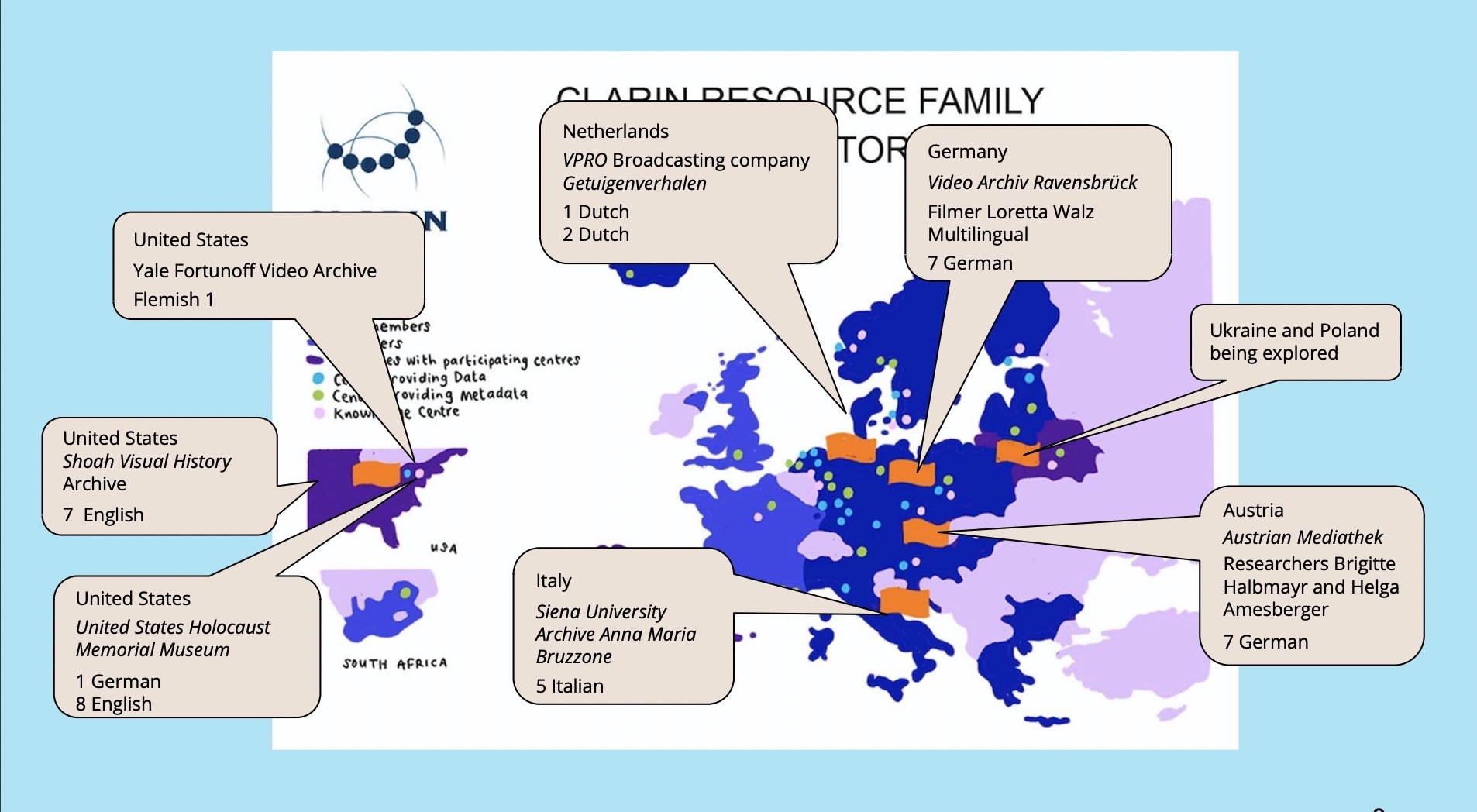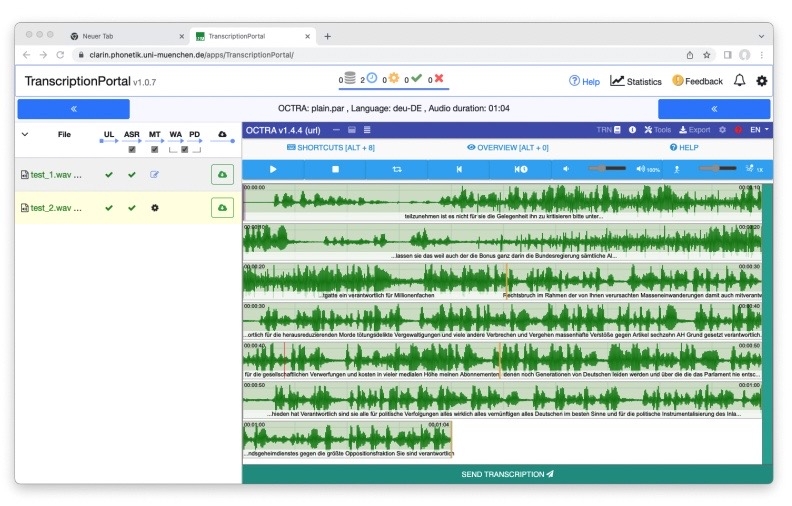The Project
The Voices from Ravensbrück project is the result of the curation and selection of multilingual oral history interviews with survivors from the Ravensbrück concentration camp for women. Organised and funded in the context of CLARIN’s Resource Families, this interdisciplinary project brings together multilingual experts in the fields of linguistics, speech technology, speech corpora curation, phonetics and history.
A successful pilot project in 2021 involved the digitisation and transcription of five Italian interviews. Now, the new ‘Ravensbrück Oral History Resource Family’ comprises 38 audio interviews from different countries. The data, which was heterogeneous in terms of format and quality, has been processed and curated so that all interviews are now easily accessible and comparable. The outcome was recently presented in the well-attended CLARIN Café ‘Voices from Ravensbrück on the Web - A Multilingual Challenge’.

Ravensbrück Women: Their Testimonies
The project gives voice to a heterogeneous group of women who survived the Ravensbrück concentration camp, including resistance fighters, aid workers, prisoners of war, and Jewish women and children. After the camp was liberated by Soviet forces, the women returned home or emigrated.
Today, many countries hold collections of audio or video testimonies, either in private archives or in public institutions. Countries in which interviews have been found include the Netherlands, Germany, Austria, Italy and the US, while the archives in some Eastern European countries are still being explored by Yuliia Chernishova and Alessandra Carbone at Siena University. The interviews represent collected data that already belong to a specific project or archive, with some already being accessible online.
CLARIN Resource Family for Oral History
The new CLARIN Ravensbrück Oral History Resource Family brings together a specific kind of speech data: first-person spoken testimonies with a historical and deeply personal character. The Ravensbrück dataset currently includes interviews in Dutch, German, English and Italian. The interviews were selected with the aim of enabling the comparison of data that covers a similar topic from a multilingual and multidisciplinary perspective.
Aligning all of these oral testimonies with a common format came with many challenges: the interviews varied widely across a range of variables, including quality and style, metadata schemes, availability of translations, transcripts or summaries, legal frameworks and knowledge about the context in which they were created.
The metadata scheme was key to successfully uniting this rich and varied dataset. As presented by Henk van den Heuvel during the CLARIN Café, all processed interviews comply with CLARIN’s standard metadata scheme (Component Metadata Infrastructure, or ). In addition, a special CMDI profile was created in the CMDI component registry for this Resource Family. The metadata was added and downloaded and can now be harvested from the VLO. All links to the CMDI metadata are also available via the CLARIN Resource Family Oral History landing page.

Outcome
By digitising, curating and storing the material in the CLARIN infrastructure, this project presents a unique opportunity to study and compare these historical sources. The compelling topic and the way in which these interviews are presented, grouped and structured makes them attractive and easy to work with, opening up many avenues for cross-disciplinary and multilingual research in a broad variety of fields, including anthropology, psychology, literary studies, sociology, health studies, trauma studies, (socio)linguistics and cognitive sciences. In addition, it represents a valuable resource for schools, higher education, the media, and society more widely.
The Ravensbrück interviews cover dimensions of historical and social and reality that cannot be found elsewhere; they give voices to a group of people who are under-represented in institutional archives and offer a new perspective on a much-studied subject. At a time when most possible perspectives and themes about WWII have been covered, resources such as this enable a new era of comparison.
The multilingual character of the archive offers the possibility, for instance, to explore and compare the communication strategies and narrative styles used by different groups of the camp population. The dataset also allows the exploration of non-verbal communication, such as silences and pauses, perhaps revealing some universal features to the women’s testimonies. The wide range of interdisciplinary opportunities arising from the creation of this Resource Family means that, while it is the outcome of this project, it also represents the beginning of a much larger project.
Feedback on the CLARIN Café
Dissemination and Coverage
Silvia Calamai, Associate Professor in linguistics and sociolinguistics, University of Siena, Italy
Arjan van Hessen, Researcher, University of Twente, Netherlands
Stefania Scagliola, independent scholar, Netherlands
Christoph Draxler, Researcher, Ludwig-Maximilians-Universität Munich, Germany